Table of Contents
NCERT Solutions for Class 7 Maths Chapter 2 Fractions and Decimals provide expert guidance on mastering the concepts covered in the CBSE Class 7 Maths syllabus. In Exercise 2.2, we will focus on comparing and ordering fractions.
Being able to compare fractions is an essential skill in mathematics. We will explore techniques to determine which fraction is greater or smaller between two or more fractions. Understanding the concept of equivalent fractions will be key to comparing fractions with different denominators.
Through carefully explained examples and practice problems, the NCERT Solutions will help you develop a strong foundation in comparing fractions. Let’s dive in and master this important topic together!
NCERT Solutions for Class 7 Maths Chapter 2 Fractions and Decimals Exercise 2.2
Ex 2.2 Class 7 Maths Question 1.
Which of the drawings (a) to (d) show.
\(\begin{array}{ll}{(i) 2 \times \frac{1}{5}} & {(i i) 2 \times \frac{1}{2}} \\ {(i i i) 3 \times \frac{2}{3}} & {(i v) 3 \times \frac{1}{4}}\end{array}\)
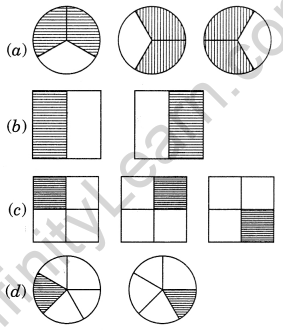
Solution:
(i) \(2 \times \frac{1}{5}\) represents drawing (d)
(ii) \(2 \times \frac{1}{2}\) represents drawing (b)
(iii) \(3 \times \frac{2}{3}\) represents drawing (a)
(iv) \(3 \times \frac{1}{4}\) represents drawing (c)
Ex 2.2 Class 7 Maths Question 2.
Some pictures (a) to (c) are given below. Tell which of them show:
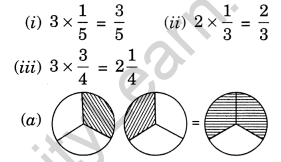

Solution:
(i) \(3 \times \frac{1}{5}=\frac{3}{5}\) represents figure (c)
(ii) \(2 \times \frac{1}{3}=\frac{2}{3}\) represents figure (a)
(iii) \(3 \times \frac{3}{4}=2 \frac{1}{4}\) represents figure (b)
Ex 2.2 Class 7 Maths Question 3.
Multiply and reduce to lowest form and convert into a mixed fraction:
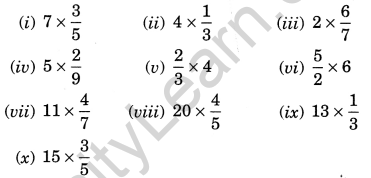
Solution:
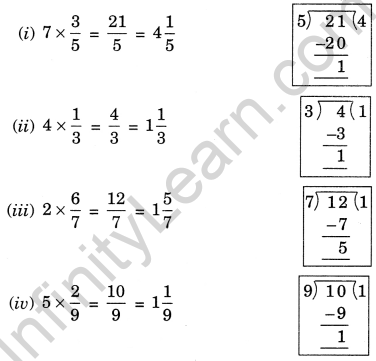
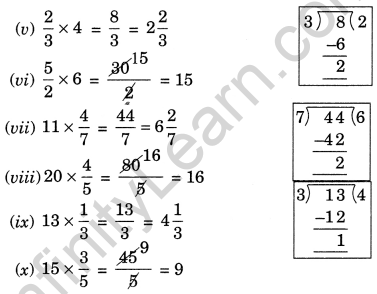
Ex 2.2 Class 7 Maths Question 4.
Shade:
(i) \(\frac{1}{2}\) of the circles in box (a)
(ii) \(\frac{2}{3}\) of the circles in box (b)
(iii) \(\frac{3}{5}\) of the circles in box (c)
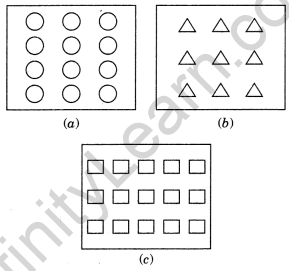
Solution:

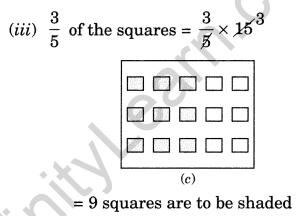
Ex 2.2 Class 7 Maths Question 5.
Find:

Solution:
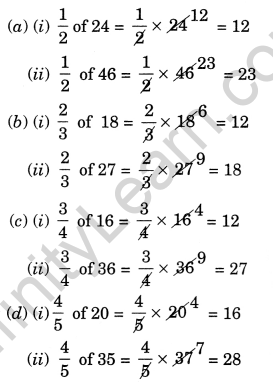
Ex 2.2 Class 7 Maths Question 6.
Multiply and express as a mixed fraction.

Solution:
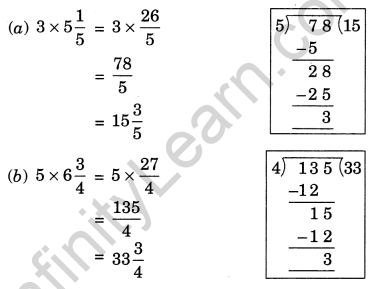
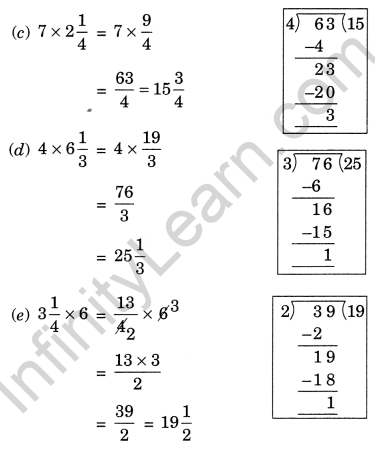
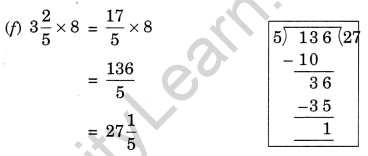
Ex 2.2 Class 7 Maths Question 7.
Find:
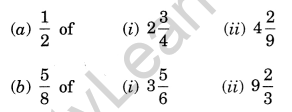
Solution:
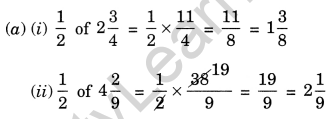
Ex 2.2 Class 7 Maths Question 8.
Vidya and Pratap went for a picnic. Their mother gave them a water bottle that contained 5 litres of water. Vidya consumed \(\frac{2}{5}\) of the water. Pratap consumed the remaining water.
(i) How much water did Vidya drink?
(ii) What fraction of the total quantity of water did Pratap drink?
Solution:
(i) Water consumed by Vidya = \(\frac{2}{5}\) of 5 litres
![]()
Water consumed by Patap
= 5 litres – 2 litres = 3 litres
(ii) Fraction of water consumed by Pratap
= \(\frac{3}{5}\) litres
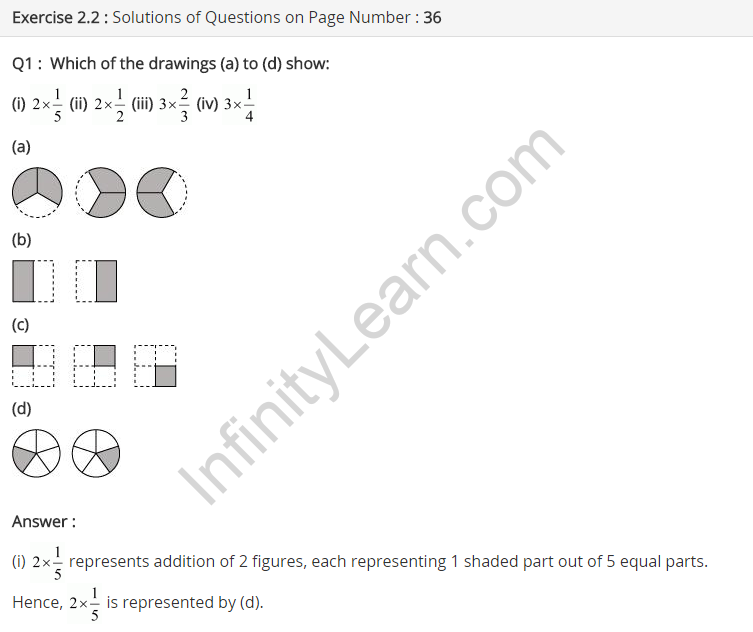
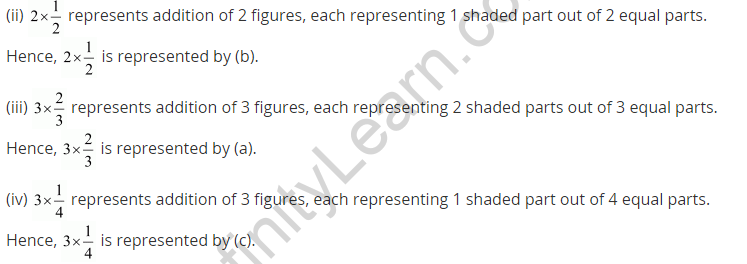
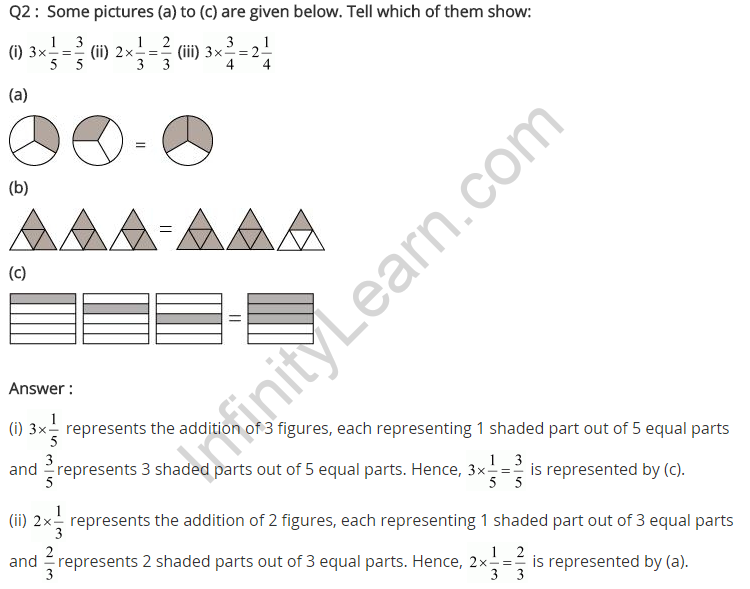

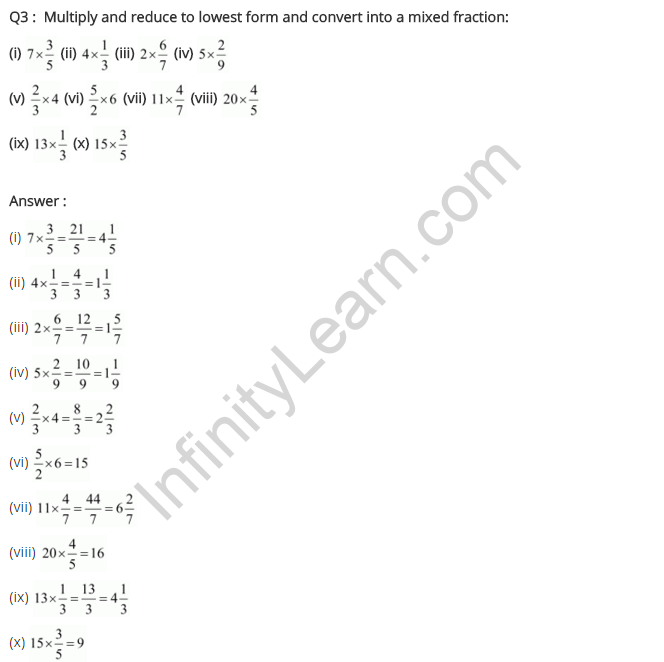
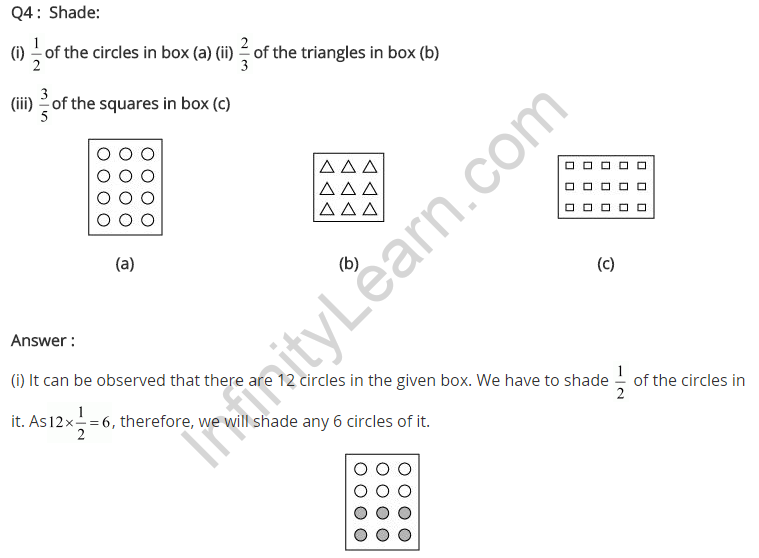
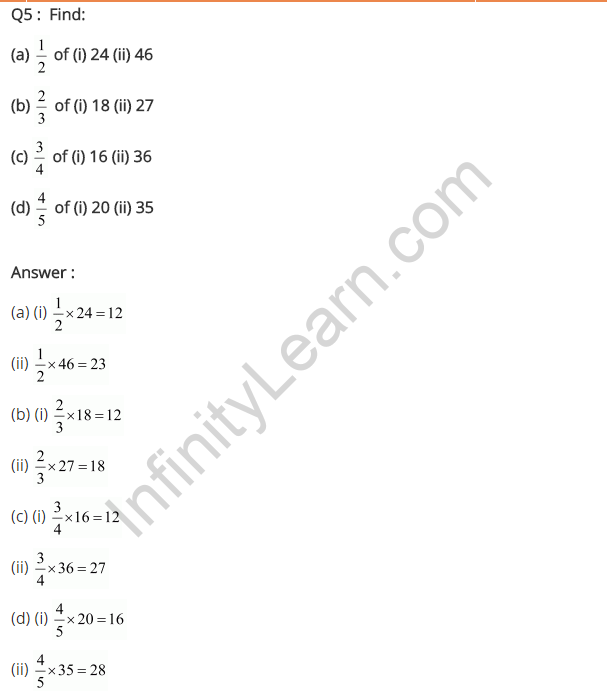
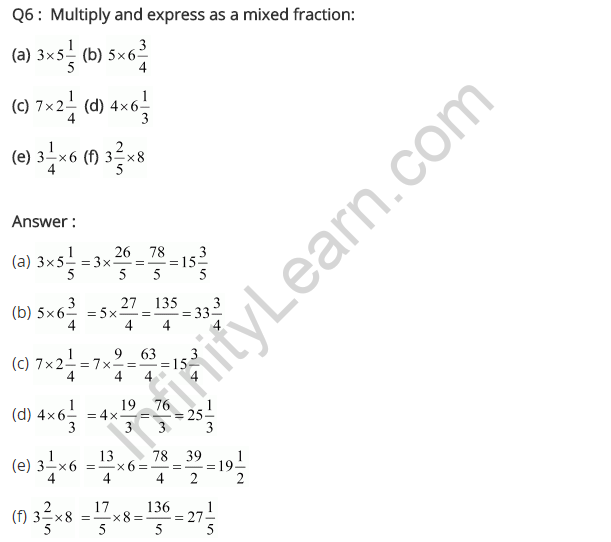
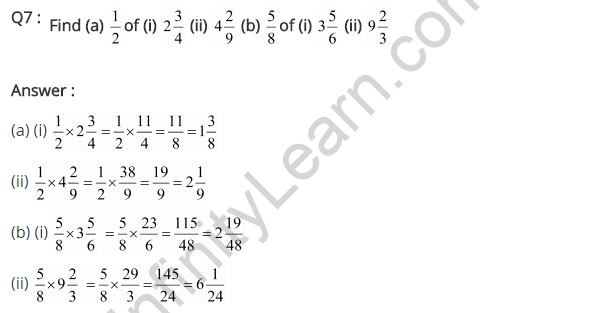
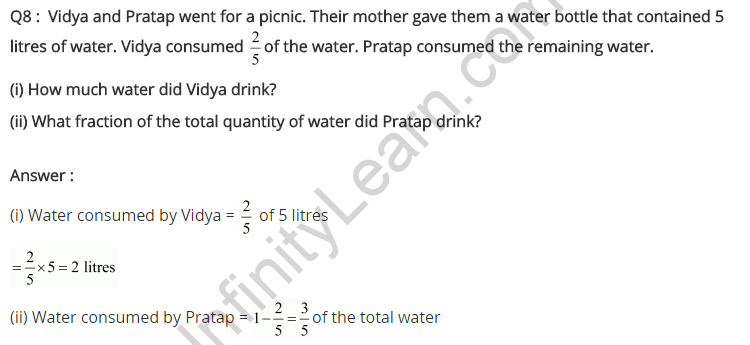
Class 7 Maths Chapter 2 Fractions and Decimals FAQs
What is the purpose of Exercise 2.2 in NCERT Solutions for Class 7 Maths Chapter 2?
The main purpose of Exercise 2.2 is to help students learn how to compare and order fractions. This is an essential skill in mathematics that allows you to determine the relative size of different fractions.
What techniques will I learn to compare fractions in this exercise?
In this exercise, you will learn techniques such as finding equivalent fractions, comparing numerators, and using the concept of the least common denominator to compare fractions with different denominators.
Why is understanding equivalent fractions important for comparing fractions?
Understanding equivalent fractions is key because it allows you to rewrite fractions with different denominators in a way that makes them easier to compare. By finding common denominators, you can directly compare the numerators to determine the relative size of the fractions.
What types of practice problems will be included in Exercise 2.2?
The NCERT Solutions will provide a variety of practice problems, including comparing two or more fractions, ordering a set of fractions from smallest to largest, and solving word problems involving fraction comparisons.
How will the NCERT Solutions help me master the concepts in this exercise?
The NCERT Solutions provide step-by-step explanations, illustrative examples, and plenty of practice problems to help you thoroughly understand and apply the techniques for comparing and ordering fractions. The solutions also include tips and tricks to make fraction comparisons easier.





